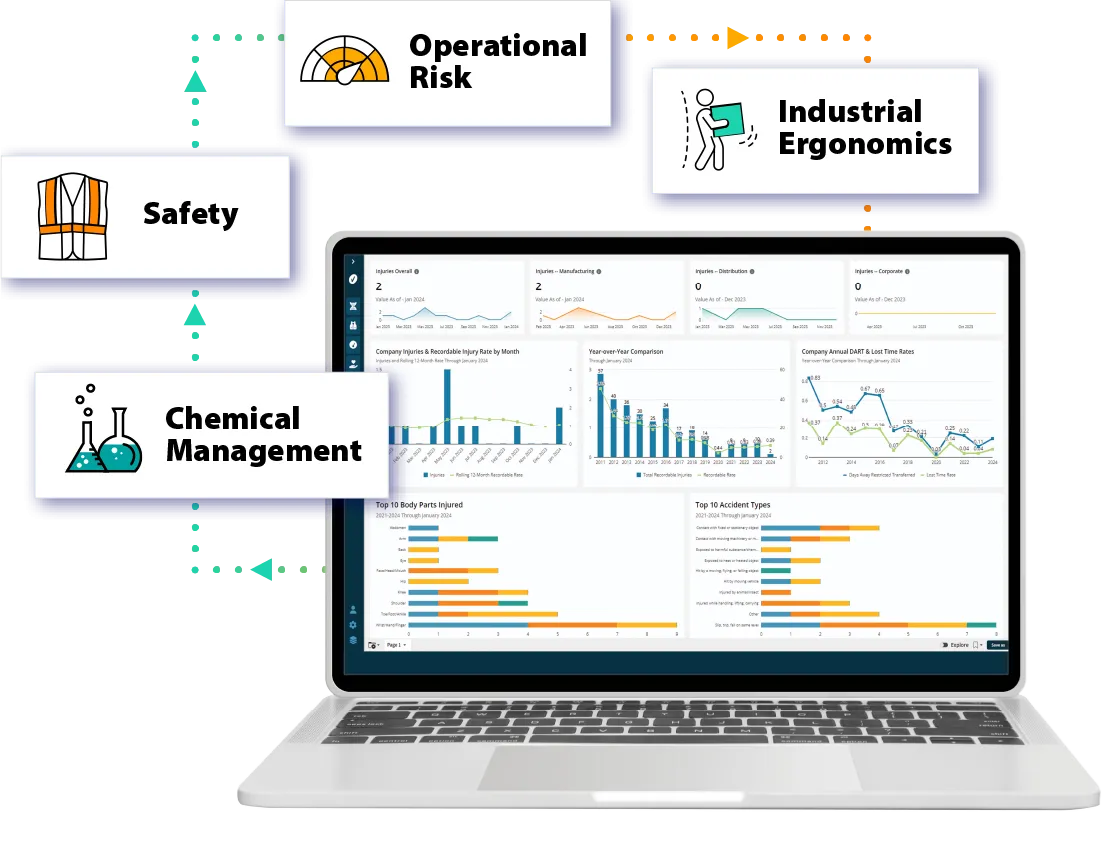Environmental, Health, and Safety (EHS) management is in the midst of change in today’s digital environment. Organizations are attempting to stay compliant, mitigate risks, and keep a safe work environment are affected by the tools they use, in terms of adoption and effectiveness. Among the tools, mobile-first EHS software will be a game-changer because it enables organizations to connect with employees more easily regardless of their location or job role.
This article looks at how mobile-first platforms are critical for higher adoption, the advantages of mobile-first platforms, and how they also enhance engagement through digital safety training and other modern solutions like a Safety Management App.
The Shift Toward Mobile-First EHS Platforms
Meeting the Modern Workforce Where They Are
Today’s workforce is more mobile and distributed than ever. Employees may be working in remote locations, job sites, or any number of scenarios where they cannot access a desktop system. Mobile-first EHS software enables businesses to be sure important safety information as well as reporting tools and compliance tasks are always available everywhere.
Higher Engagement and Adoption Rates
Employee engagement has been one of the largest obstacles to successful EHS implementation. Employees are unlikely to log into a desktop portal after their shifts are over. But, with a Safety Management App on their personal and/or company issued devices, getting incidents reported, procedures accessed, and compliance items completed have now become part of every employee’s workday. When they get to access EHS through mediums they enjoy, access becomes seamless, and as a result, adoption/distribution rates are increased easily.
Advantages of Mobile-First EHS Platforms
1. Live Incident Reporting
Mobile devices enable people to record incidents at the site of the incident utilizing photos, videos, and location information. Mobile-first EHS software converts incident reporting into a hassle-free experience, while reporting in real-time and minimizing underreporting.
2. More Convenient Digital Safety Training
Traditional safety training often requires face-to-face interaction, tethers the learner to a computer, or simply isn’t available. With a mobile-first platform, companies can push their digital training for Safety directly to people’s phones. This makes learning safer easier and more consistent. Trainees can progress through the modules on down-time, refer to safe work procedures while in the field, and dynamically learn about changing safety protocols.
3. Better Compliance Tracking
Regulatory compliance is only useful when records can be securely kept and followed up. A Safety Management App, with the help of automation, can alert people when they require follow-up, label training with easy access, and build compliance reports in real-time. This is an asset for reducing the workload for management while ensuring that nothing was missed in terms of requirements.
Why Mobile-First EHS Software Drives Higher Adoption
Accessibility Creates Consistency
Employees are much more likely to interact with systems that they find easy to access, and with EHS tools available in the palm of their hand, mobile-first EHS software eliminates barriers limiting consistent interactions across the workforce.
User Experience Creates Engagement
Mobile platforms are developed with user experience in mind. Safety Management App often look similar to popular consumer apps, creating an intuitive experience for workers with relatively low volumes of training. Intuitiveness creates familiarity, increasing participant engagement and decreasing resistance to technology changes.
Real-Time Communication Strengthens Safety Culture
Real-time communication is another factor leading to improved adoption. Managers can send push notifications, alerts or updates to employees with mobile solutions. Coupled with digital safety training, there is a culture of proactivity; the longer an employee is aware and engaged, the safer they likely will be.

The Role of Digital Safety Training in Adoption
Flexible Learning Options
Workers come from a variety of backgrounds and have different schedules. Digital safety training allows workers to learn at their own pace and minimize the time typically involved in facilitator-led classroom training, which often pulls workers out of work. Workers can log in and complete the modules during breaks, their commute, or while on assignment in the field.
Better Knowledge Retention
Typically, mobile integrated training modules contain interactive videos, quizzes, and gamification which improve overall worker retention. Furthermore, mobile-first EHS software delivers training as an ongoing project rather than a single-time event.
Integration with Safety Management Apps
Integrating training modules into the Safety Management App allows workers to complete and subsequently apply what they learned in their day to day work flow. Creating the connection between learning and action improves the entire training program.
Overcoming Challenges with Mobile-First Platforms
Data Security Concerns
A common hurdle to adopting mobile platforms is ensuring data is secure. Today’s mobile-first EHS software has encryption, secure logins, and user level permissions that protect sensitive safety data.
Managing Connectivity in Remote Areas
Field workers may work in places with little connectivity. Supervisors have the benefit of Safety Management Apps that offer ‘offline’ functionality, so workers can log incidents, complete forms, or take digital safety training when an Internet connection is not available, and the data will be synced when a connection is restored and the work continues.
Future of Mobile-First EHS Platforms
EHS management is, without question, mobile. The convergence of AI, IoT, and predictive analytics with mobile-first EHS software means organizations will be able to view risk, employee behaviours, and compliance gaps in real time. When layered with immersive digital safety training, EHS platforms will serve to generate a more engaged and safer workforce.
Conclusion
Organizations that embrace mobile-first strategies experience higher adoption, better engagement, and improved compliance outcomes. By providing real-time reporting, convenient access to digital safety training, and user-friendly tools via a Safety Management App, companies empower employees to take ownership of safety practices.
At Salomi we understand the power of innovation in safety management. Our solutions are designed to help organizations transition smoothly into mobile-first EHS platforms, ensuring not only compliance but also a culture of safety that resonates across every level of the workforce.

